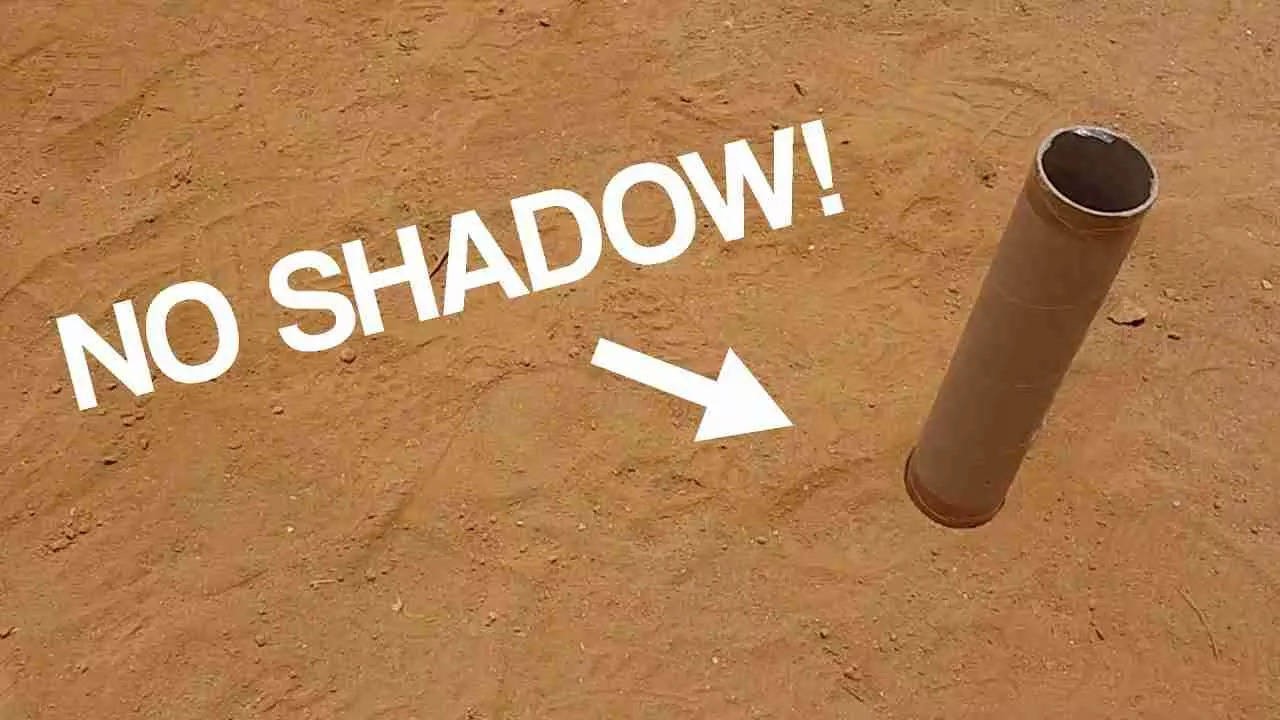Description

Disclaimer: Copyright infringement not intended.
Context
- Bengaluru is witnessing "Zero Shadow Day".
About
- Zero Shadow Day is a celestial phenomenon wherein vertical objects won't have any shadow for brief period of time.
Place of occurrence
- As per Astronomical Society of India, the celestial phenomenon takes place near the equator which falls between Tropic of Capricorn and Tropic of Cancer.
.jpeg)
Frequency of occurrence
- For every point on Earth between the Tropic of Cancer and the Tropic of Capricorn, there are two Zero Shadow Days a year.
- Thus, this celestial phenomenon takes place twice a year and all vertical objects stop casting shadows on the ground.
In a nutshell,
Zero Shadow Day occurs when the Sun will be directly overhead at local noon, and hence any vertical object will cast no shadow. This happens for places between the Tropic of Cancer and Tropic of Capricorn.
Why does a Zero Shadow Day happen?
- The Sun is almost never exactly overhead at noon, but usually transits a bit lower in altitude, a bit to the north or a bit to the south.
- The Earth's rotation axis is inclined at 23.5 degrees to the plane of its revolution around the Sun, which is why we have seasons. This also means that the Sun, in its highest point of the day, will move from 23.5 degrees south of the celestial equator to 23.5 degrees north of the equator (Uttarayan), and back again (Dakshinayan), in a year.
- Uttarayan (movement of the Sun from south to north from winter solstice to summer solstice) and Dakshinayan (back from north to south) happen because Earth’s rotation axis is tilted at an angle of roughly 23.5° to the axis of revolution around the Sun.
- The Sun’s location moves from 23.5°N to 23.5°S of Earth’s equator and back.
- For people living between +23.5 and -23.5 degrees latitude, the Sun's declination will be equal to their latitude twice - once during Uttarayan and once during Dakshinayan.
- On these two days, the Sun will be exactly overhead at noon and will not cast a shadow of an object on the ground.
- This Zero Shadow Day will clearly be different for different places on Earth.
|
PRACTICE QUESTION
Q. Which of the following statements are correct in reference to Zero Shadow Day?
a) Zero Shadow Day occurs when the Sun will be directly overhead at local noon, and hence any vertical object will cast no shadow. This happens for places between the Tropic of Capricorn and Arctic Circle.
b) Zero Shadow Day is clearly different for different places on Earth.
1. Only a
2. Only b
3. Both a and b
4. None of the above.
Correct Answer: Option 2
|

https://indianexpress.com/article/explained/explained-sci-tech/bengaluru-zero-shadow-day-what-is-it-why-does-it-happen-8575725/










